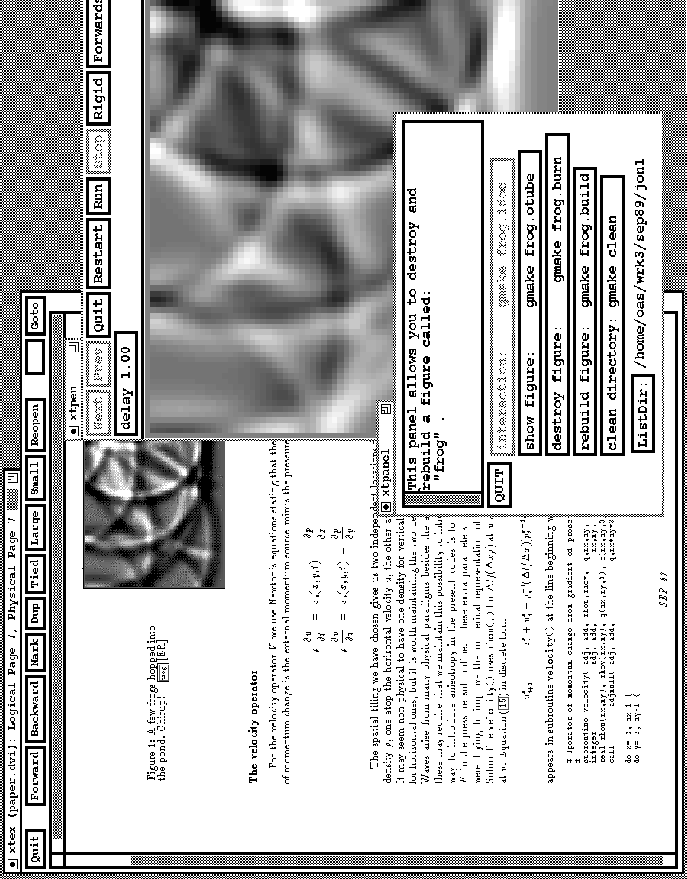




Next: Software installation
Up: Free SEP software packages
Previous: Free SEP software packages
At the Stanford Exploration Project, we have combined various software
tools into a software environment for research of seismic data
processing. Figure 1 shows the electronic version of a
reproducible research document. Such an electronic document
represents a directory that contains the traditional document and all
the software needed to compute the included results.
xtpanel
Figure 1
The reader interface for reproducible research is only one
component of SEP's current computational research environment: A
research document at SEP is written in LATEX (Postscript version
visible in the
background to the left). Using SEP's own LATEX macros, a
push-button in each figure caption invokes a graphic user interface
written in a script language called xtpanel. The graphic user
interface enables a reader to interactively execute the burn,
build, clean, and view commands for each individual figure. (The
panel is shown in the foreground. The result of make view is
shown towards the right.) SEP's ReDoc rules allow an author to
easily extend the interactivity of a result figure to additional,
application-specific actions.

The window at the left displays a TeX document. Any figure caption in
that document includes a push-button that, when pressed, issues a
system command to the displaying computer. By default, that system call
starts the graphical user interface that is shown to the bottom right
of the screen-dump. The graphics interface allows a reader to choose
several actions: by default the reader can remove, build, and view the
figure. Additionally, a reader can clean the directory of all
unnecessary, intermediate files or individually inspect the files
underlying the document.
A typical project at SEP starts with an idea and a seismic data set to
test that idea. Usually, the data set is already stored in our preferred,
home-brewed SEPlib format.
An input data set
is processed by a sequence of simple, standard SEPlib routines
that are governed by command line parameters and combined
by UNIX pipes. A researcher's new process idea usually requires a new
program. If implementing this program in C or
Fortran, the researcher can take advantage of a rich subroutine
library that allows him to integrate his own program seamlessly into the
SEPlib processing sequence.
The author stores the commands that constitute such a processing
sequence in a GNUmakefile. The GNUmakefile includes all the rules to
manage the resources the author needs. These resources may include a
C or Fortran compiler, Perl interpreter, or various preprocessing
programs such as Ratfor. To avoid rewriting the
same rules over and over again, every researcher includes a set of
SEP-wide rules and variable definitions into his GNUmakefile.
Additionally, authors write a LaTeX document that describes their
research and their findings. As in many fields of computational
sciences, the results in seismic processing are illustrated by
figures.
At SEP, special TeX macros include a push-button in any figure
caption. That push-button, when pressed, issues commands to the
GNUmakefile of the document's underlying software directory. It is
that connection which allows a reader to inspect and reuse
an author's software efficiently.





Next: Software installation
Up: Free SEP software packages
Previous: Free SEP software packages
Stanford Exploration Project
3/8/1999
